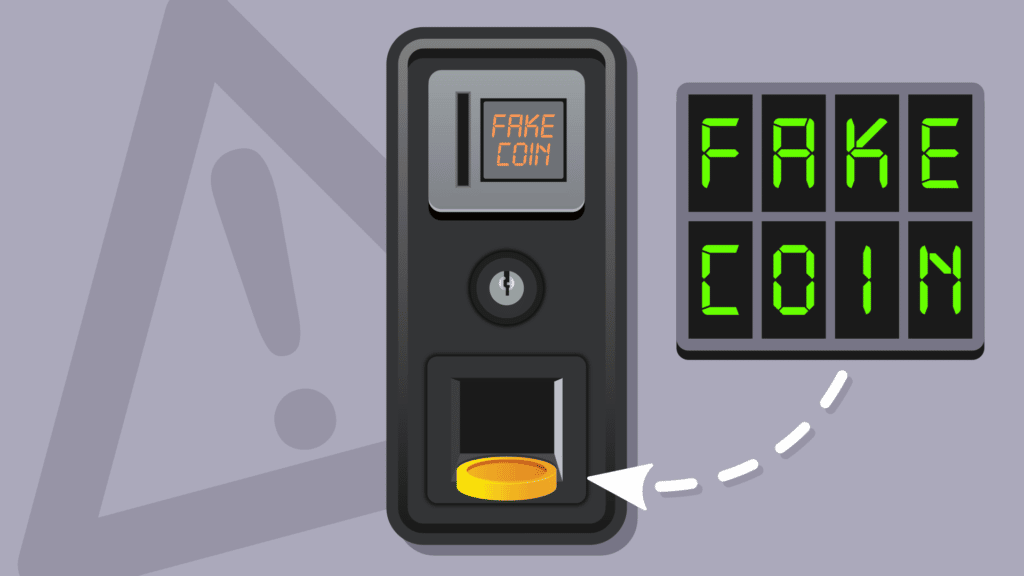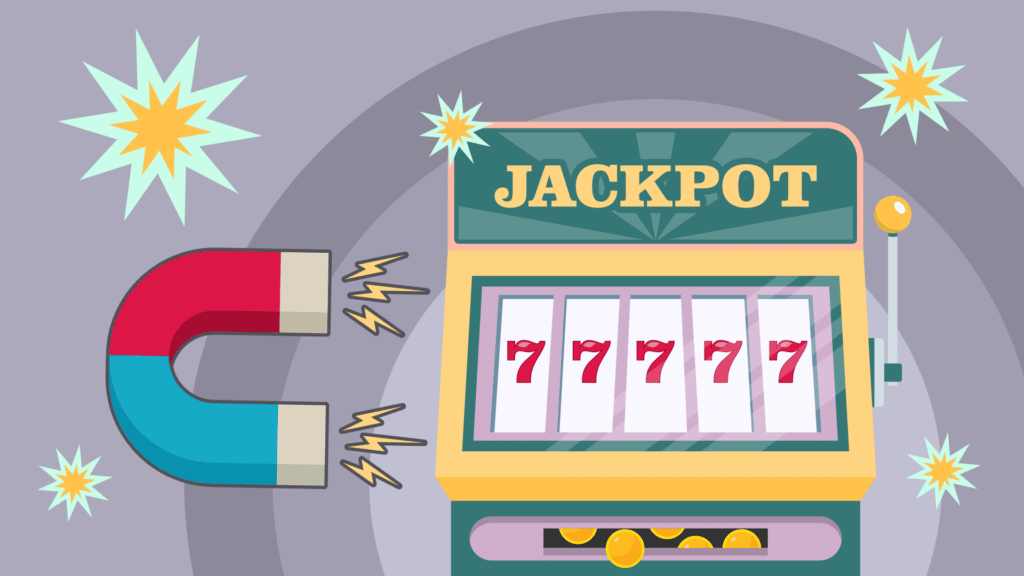Although slots are a relatively recent addition to the gaming scene compared to classics like card games and roulette, they have managed to carve out a significant niche among enthusiasts. It's somewhat perplexing, but we suspect it's due to their sheer randomness. Unlike other games in a casino where strategies can sway the outcome, slots rely entirely on chance. Your practice and skills don't affect your odds of hitting the jackpot.
While the thrill of chance excites many players, some have sought out ways to exploit the system for personal gain. Over the years, a variety of hustlers and professional gamblers have managed to manipulate the reels to their advantage.
Our team took on the challenge of uncovering the most inventive cheating techniques used throughout the years, illustrating the evolution of slot machines. Do keep in mind that modern machines largely operate on sophisticated software, which has rendered many of these older methods ineffective. So, get comfortable as we take you through these clever tactics.
Yo-Yo
In the late 80s and early 90s, slot machines operated using a basic internal sensor that detected if a coin was inserted. You’d drop a coin in, and the game would engage as soon as the coin hit the sensor.
Tech-savvy gamblers soon realized that the sensor was positioned along the coin's descent path. This insight led to a revelation: they could trigger a game without the coin ever needing to touch the bottom of the machine. How did they manage it, you ask?
Cheaters devised a clever trick by attaching a coin to a retractable string. Once they arrived at the casino, they would lower the coin to trigger a new game. The best part? They could pull the coin back, allowing them to enjoy countless free play sessions.
Though the yo-yo technique became popular, casino operators quickly adapted and began phasing out these vulnerable machines. However, during its heyday, this method allowed small teams of players to rake in significant winnings.
Knowing the Source Code
Today’s slots are entirely digital, making mechanical manipulation impractical or overly complex. That’s why any successful cheating strategy must hinge on understanding the game’s inner workings, ideally requiring access to the actual source code.
Sadly, that insider information remains off-limits, with access granted solely to the developers. Unless someone pulls off a successful hack, which in today's world is quite unlikely.
This low likelihood is due to strict regulations that mandate software providers implement robust security measures such as encryption and regular audits, all designed to thwart potential hackers. Even if a hack were attempted, it wouldn’t be long before developers detected the breach and acted accordingly, as their reputation relies on providing fair games.
Fake Coins
In the earliest days, slots featured simple buttons or levers activated when coins made contact. This primitive interaction signaled the machine to begin spinning once the correct amount of money was recognized. Professional cheats quickly figured out the machine's mechanics.
As a result, counterfeit coins emerged. Initially, these replicas merely aimed to trigger spins for free. Game manufacturers rapidly caught onto this, igniting a protracted game of cat and mouse.
The next innovation involved installing light sensors in the machine’s coin mechanisms. These devices emitted beams of light, and if the beam was interrupted, the reels would spin. However, the late 2000s saw a complete digitization of slot machines, making this tactic impractical.

Bill Validator Device
In addition to coins, slot machines began accepting cash notes, which added another layer for cheaters. They quickly devised strategies to spoof these paper bills using a contraption called the bill validator, which concealed tell-tale markings.
This cunning approach allowed individuals to trick machines into accepting a $100 bill when, in actuality, they were inserting a mere $1. Though relatively recent, this scam was swiftly curtailed, as casinos take such theft very seriously. Manufacturers then enhanced their systems, preventing machines from accepting bills unless they were adequately inserted.
Manipulating Software Glitches
Even in their infancy, slot machines contained some basic form of software. It may not resemble the sophisticated multi-platform systems you're familiar with, but these rudimentary programs ensured random outcomes. Despite their simplicity, the unpredictability of code behavior provided fertile ground for cheaters.
This led to the phenomenon of exploiting software glitches. Players discovered that, under certain circumstances, machines might malfunction, resulting in unexpected coin payouts or favorable spins. Interestingly, these glitches were often triggered by a random sequence of buttons being pressed.
One infamous case encapsulating the unpredictability of slots involved 90-year-old Pauline McKee, who reportedly won $41 million on a slot machine in an Iowa casino. She pursued legal action against the casino owners in 2012, but previous rulings set a concerning precedent.
Manipulating Software Chips
This particular tactic is beyond the reach of most, as it demands a deep understanding of slot machine mechanics along with exceptional organizational skills. Unsurprisingly, very few have dared to attempt it. Among the few brave enough was Dennis Nikrasch.
Nikrasch is notorious for orchestrating the largest heist in Las Vegas history, siphoning over $16 million over two decades. A skilled locksmith with technical acumen, he disassembled slot machines multiple times and discovered the reprogramming capabilities of their chips that could trigger jackpot wins.
With the assistance of a few accomplices and an extensive plan, Nikrasch managed to deceive casino operators like no one had before. Today’s casinos have surveillance measures in place, and any suspicious activity around machines could attract security’s attention in mere seconds.

The Atlantic City Piano Wire
We cannot overlook the classics, and perhaps no trick is as legendary as the use of piano wire. Picture this: in 1982, an unassuming group of men strolled into the Caesars Boardwalk Regency casino. They made their way directly to the slot machines.
While some kept watch, the leader slyly slipped a 20-inch length of piano wire into the machine through the coin slot, jamming the internal timing mechanism responsible for tracking spins.
After a brief tampering session, they managed to hit a $50,000 jackpot, but as they were making their exit, security apprehended them. With video evidence of their actions, authorities swiftly took them into custody, leading to the prohibition of piano wires in Atlantic City casinos.
Top-Bottom Emptying
On the spectrum of cheating techniques, this one stands out as one of the simplest ways to game the slots. In the 1970s, professional con artists crafted a tool known as a top-bottom device. This contraption featured a bent metal rod at its top and a long wire at the bottom, with the top piece inserted into the coin slot while the wire reached into the payout tray.
In those days, engaging these two mechanisms would cause the machine to dump all its coins. Even now, no other method has proven as accessible as this one. Naturally, when it comes to modern digital slots, such tactics are utterly futile.
Magnets
When we talk about slot cheating in popular culture, this is the image that comes to mind. Older slot machines were metal encased in a thin aluminum or similar alloy, which made it feasible for cheaters to sneak magnets into casinos and manipulate the reels at will.
However, similar to the earlier methods, while accessible to the average person, success hinged on having a powerful magnet positioned perfectly to halt the reels. Not everyone could master that technique. Moreover, early slot machine software tracked spins, enabling casino personnel to verify significant wins in real-time.

Disrupting the Light Sensors
Tommy Carmichael earned a revered reputation in the realm of casino hustlers due to his innovative creation, the light wand. This plastic device emitted focused beams of light to deceive the coin-triggering light sensors in slot machines. Tommy and his associates executed this scheme thousands of times, raking in millions from Vegas casinos.
And this was merely the beginning of Tommy’s exploits; he devised numerous other gadgets and continued to cheat even after serving time for his offenses. As light sensors became obsolete, so did Tommy’s remarkable antics.
Can You Cheat at Other Casino Games?
Cheating at slots proves far more challenging compared to other casino games. The fundamental reason being that slots are entirely random, whereas games like blackjack can be influenced by player skill. Card counting, for instance, is a favorite strategy among blackjack enthusiasts.
To anticipate the next card, players mentally tally numbers based on whether the dealer’s previous draws were high or low. Only seasoned pros can execute sophisticated techniques without bringing attention to themselves. Though this strategy isn’t illegal in itself, casinos hold the power to ban players permanently if caught in the act.
When it comes to roulette, manipulating the game is a challenge. Sure, one could try to collaborate with the dealer, but accurately targeting even a specific range of 10 numbers is tricky, let alone nailing the exact one. On the flip side, electronic roulette setups are akin to a chaotic frontier. To steer clear of potentially rigged machines, always choose games powered by well-established software providers. If the brand looks unknown and has poor language quality, you might be stepping into risky territory.
Poker is another favorite target for those looking to exploit the system. One of the most common methods employed is card marking. In some cases, players resort to using invisible ink to mark their high-value cards. After cycling through the deck a few times, they can use special glasses to reveal their marked cards. Unfortunately, advancements like infrared cameras and various sensors have made this practice nearly obsolete.
Is It Possible to Cheat at Slots in 2025?
Cheating at slot machines has become quite the challenge in 2025. That said, there are still some theoretical methods that could be employed. A significant example involves unscrupulous game developers and dubious websites operating from tax havens. By integrating manipulated code, these developers enable casino operators to subtly inflate the house edge. This may go unnoticed, as players often go into slots with the expectation of not winning much. Always check for certifications from independent auditors to ensure fairness.
Another method of rigging slots can come directly from the casino's end. Some establishments tweak popular games and engage influencers to stream their gambling endeavors. These influencers often appear to have a high winning rate during their broadcasts, encouraging their audience to gamble at the same casino. To add to the issue, numerous sites pay these brand ambassadors a cut of their players' losses, so don't take someone's seemingly lucky jackpot at face value. Always seek out credible evidence.

